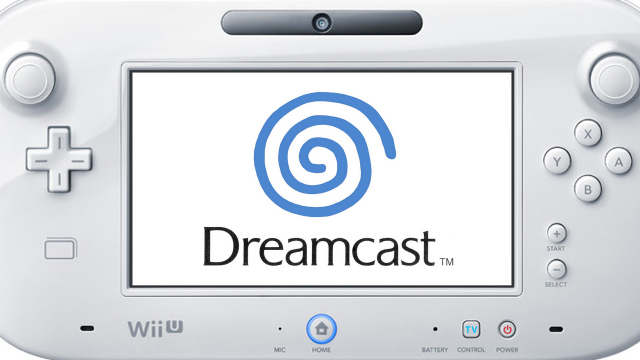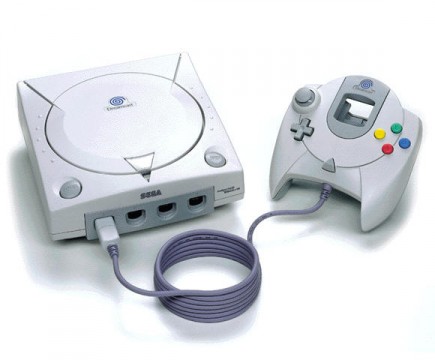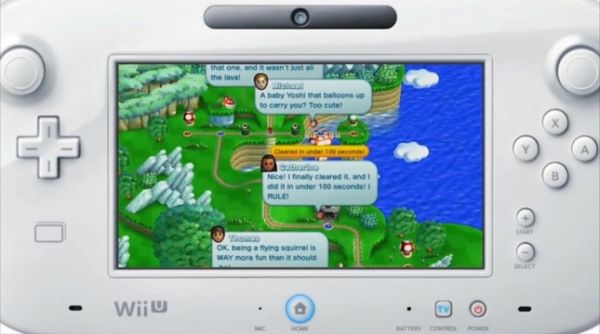
Late last year, Nintendo’s Wii U launched with reasonable fanfare and brought several drastic changes to the Nintendo formula– a unified online system, a controller that was quite radically different to its predecessor with a screen in the controller, and significantly increased power relative to its stable mates. But all this might sound very familiar to those alive in 1999 when Sega’s Dreamcast first hit store shelves. Will Wii U end up the same way as that ill-fated console? Let’s turn to the story of Sega to see where the Wii U might be heading next.
The Sega Dreamcast first launched in 1999 worldwide and the market was a very different place than it is today. Sega had come out of a painful five years trying and failing to get non-Japanese gamers excited about the Saturn, PlayStation was selling like hot cakes and Nintendo dominated in the handheld market. Without any major software successes, everything rested on their latest console, the Dreamcast. With the promise of a new, fully three-dimensional Sonic game for their new machine, as well as the idea of bringing internet play to the home console race, it represented a great technological leap forward and should by all accounts have been a huge success.

At first, it seemed the Dreamcast would be just that. At the time, the launch was the most successful in history, Sonic Adventure became a record-breakingly popular title and with interesting games like Shenmue on the horizon, Sega were, for the moment, safe.
Unfortunately, the honeymoon couldn’t last and Sega’s time was short– the PlayStation 2 launched in the winter of 2000 and the impact on the Dreamcast was immediate, critical and irreversible. The PS2 was significantly more powerful and, crucially, played DVDs, a feature that only made it onto the drawing board late in the Dreamcast’s life.
Faced with declining sales, ruinously expensive production costs on games like Shenmue, and the imminent of yet more competition in the form of Xbox and GameCube, the Dreamcast quietly ceased production in early 2001. It was to be Sega’s last console, but it’s a machine whose legacy outweighs its modest ten million sales; in fact, as recently as 2012, games were still being produced for it thanks to an active independent community and terribly weak copy protection.
The Wii U’s similarities start in one of the Dreamcast’s most revolutionary features– its online system. While online games had existed prior to 1999, including the Saturn’s own service, it was never viable owing to idiosyncratic services for each game and the relative rarity of internet connections in the major markets. The Dreamcast fixed this with DreamArena (SegaNet in the USA) which, combined with the bundled modem for the system, allowed a unified online service that allowed simple play between friends in a way which had never before been seen.

In a similar way, while by no means the first system of its kind, Miiverse attempts to fix Nintendo’s historic problems with online gameplay. The GameCube had online play but only three or four games supported it, whereas the Wii, while not undersupplied for long-range multiplayer, used an overly complex and unreliable developer-driven friend code system that frustrated and alienated many multiplayer focused players.
Miiverse, on the other hand, uses a simple friend list system and also allows players to send messages from the games they’re playing. Not only does this allow some creative expression on the part of players and create a sort of social network based on Nintendo, but it also offers free advertising for Wii U games, which indirectly makes Nintendo money.
However, it’s not necessarily all roses. The Dreamcast faced troubles with its online services thanks to a low user base for the console and the relatively small penetration of broadband connections in the USA– just 5% of the population had them at the time, and while dial-up was another option, it was slower and less reliable since your game would drop if somebody picked up the phone.
While the internet connections are not an issue for Nintendo (over 80% of households have broadband now), the installed base for the Wii U still isn’t very large. It currently stands at a little over a million, and while this will no doubt change with time, it faces a different issue than the Dreamcast in that it must simultaneously compete with the behemoths of Xbox Live and the PlayStation Network, as well as PC-based services like Steam. In such a saturated market it will be tricky and require lots of useful innovation in order to start up a brand new network.
Pages: 1 2




 ShareThis
ShareThis







Nope. SOrry, but no way. There are more things different than there are the same between the Dcast and WiiU. The Dreamcast failed becase it was remarkably more powerful than the previous generation of consoles and basically matched (and in some cases outperformed) the generation it started. Also, you have to remember than Sega spent all of their money, time and effort into launching the console (and at such a loss per console sold). The Wii U is nothing like the Dreamcast when looking at just these 2 details.
Yeah, fair enough. I don’t intend anyone to take this as a serious business prediction – I only thought it was a little interesting some of the things that could be called the same. I don’t think the Wii U will fail and, crucially, I know for a fact Nintendo have much better sense than Sega did.
Oh no, you made good points and I figured you weren’t being a Pachter or anything, I just figured I’d throw some major differences out there as well. Good article!
I think one other difference is/will be third party support. With the quick game of hopscotch that Sega played from the Sega CD/32X to the Saturn to the DC, third parties pretty went into table flip mode and just didn’t make games at all for them (first to my mind, EA Sports’s total lack of support for the DC). Nintendo’s current problem seems to be more of a “how do we use this thing,” not a “you’re indecisive morons, so screw you.”
It doesn’t take rocket science to make up unique ways to use the GamePade touch screen: maps where you can place waypoints? Touch screen inventory? Unique ways to solve puzzles? HMMM…
Now, this article in general just screams “following the internet hit gathering bandwagon.” Why do people think WiiU is automatically going to be the next Dreamcast when Nintendo is a much stronger company then Sega ever was? Oh, right, I forgot, must grab those hits. Damn it Nintendojo I know you sometimes make good points but this is really reaching.
I don’t think I intended to imply that the Wii U would be like the Dreamcast and indeed I said as much. I grant you it can be frustrating to see people like Michael Pachter talking about Nintendo’s downfall every six months, but I don’t think they’re going to fail either.
However, even if it isn’t a likely scenario, it’s still interesting to discuss. I didn’t write this to get views, I wrote it because it interested me – I’m not paid for Nintendojo (I’m not even professional) so please believe me when I say I have no vested interest in writing this article.
The Dreamcast was a hail mary after the Saturn’s commercial failure, while Nintendo is coming off the Wii, DS, and 3DS. They did a lot of things right with it, but momentum and customer loyalty were not on their side.
The Dreamcast’s online functionality was revolutionary… 13 years ago. At this point, Nintendo Network is catching up to where the Wii should have been half a decade ago. The Dreamcast improved on predecessors’ online systems, but at a time when online functionality was a novelty, not an expected feature.
The Dreamcast comparison, to me, seems to be more about the graphical power, timing relative to the competition, and to some extent the way the Wii U’s competitors have stronger non-gaming features that might help sell them.
To be honest one of the less appealing things about this article is the lack of originality. Hasn’t the “Wii U is/could be the next Dreamcast been done enough already? (not to mention thoroughly debunked).
When people usually bring this up it is usually to insinuate that Nintendo will be forced by the assumed “Dreamcasting” to leave the home console business and become a 3rd party.
You say this wasn’t your intention but you must see it’s a touchy subject with Nintendo fans.